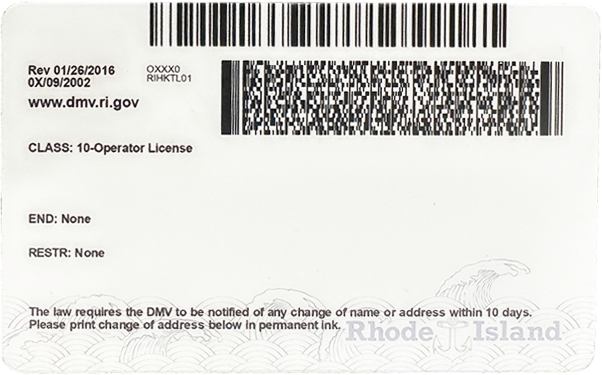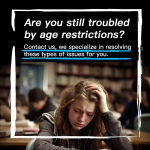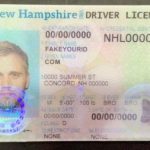Introduction
Fitness centers often require members to provide identification, and one of the most common forms of ID is a driver’s license. However, with the prevalence of fake documents in today’s society, fitness – center staff need to be vigilant in checking for fake driver’s licenses. This not only helps maintain the security and integrity of the fitness center but also protects the rights and interests of legitimate members.
Visual Inspection
The first step in checking for fake driver’s licenses is a visual inspection. Staff should be familiar with the general appearance of legitimate driver’s licenses issued in their area. This includes examining the size, shape, and color of the license. Legitimate driver’s licenses usually have a specific size that conforms to the standards set by the issuing department. For example, in many regions, the dimensions are precisely regulated, and any significant deviation may be a sign of a fake.
The color scheme of a real driver’s license is also carefully designed. The inks used are often of high – quality and have specific color gradients. Fake licenses may use inferior inks that can appear dull or have incorrect color shades. Additionally, the paper quality of a real license is usually of high – grade, with a certain thickness and texture. Fake licenses may be printed on cheaper paper that feels flimsy or has a different texture.

Another important aspect of visual inspection is the examination of security features. Most modern driver’s licenses have holographic images or elements. These holograms are difficult to replicate accurately. Staff should check for the presence of holograms in the correct locations on the license. For example, some licenses have a holographic image of the state seal or the licensee’s photo integrated into the hologram. The hologram should have a three – dimensional appearance and change color or appearance when viewed from different angles.
Microprinting is also a common security feature on real driver’s licenses. Tiny text, often invisible to the naked eye without magnification, can be found on various parts of the license. Staff can use a magnifying glass to check for the presence of microprinting. If the microprinting is missing or is of poor quality, it may indicate a fake license.
Data Verification
In addition to visual inspection, fitness centers can also verify the data on the driver’s license. Many states and regions have online databases that allow authorized individuals to check the authenticity of driver’s license information. Fitness – center staff can enter the license number and other relevant details (such as the name and date of birth of the licensee) into these databases to see if the information matches what is on the license.
Some fitness centers may also have access to third – party verification services. These services specialize in checking the authenticity of identification documents. They have more comprehensive databases and advanced verification algorithms. By using these services, fitness – center staff can get more accurate and reliable verification results. For example, a third – party verification service may be able to cross – reference the driver’s license information with other government databases to ensure its authenticity.
When verifying data, it is important to check for consistency. The name, address, date of birth, and other information on the license should match the information provided by the applicant. Any discrepancies, such as misspelled names or incorrect dates of birth, could be a sign of a fake license or identity fraud.
Interview and Questioning
Conducting an interview and asking relevant questions can also help fitness centers determine the authenticity of a driver’s license. Staff can ask the applicant about details related to their license, such as the date they obtained it or any previous addresses listed on the license. A legitimate license holder should be able to answer these questions accurately and confidently.
For example, if the license has an old address listed, the staff can ask the applicant about the reason for the address change and when it occurred. If the applicant seems confused or gives inconsistent answers, it may be a red flag. Additionally, staff can ask about the applicant’s driving history. A real driver should be able to provide some basic information about their driving experience, such as how long they have been driving or if they have had any accidents.
During the interview, staff should also pay attention to the applicant’s body language and demeanor. Nervousness or evasiveness may not necessarily mean the license is fake, but it can be a sign that further investigation is needed.
Common Problems and Solutions
- Problem: Inconsistent Visual Features
Solution: Staff should be trained to be meticulous in their visual inspections. They should have a reference guide of the legitimate driver’s license features for their area. If there are any inconsistencies, such as a different – looking hologram or incorrect paper quality, the license should be further investigated. This may involve comparing it with other known – legitimate licenses or using specialized verification tools. - Problem: Difficulty in Data Verification
Solution: Fitness centers should ensure that their staff are well – trained in using the available online databases and third – party verification services. If there are issues with accessing the databases, such as technical glitches or lack of authorization, the management should work with the relevant authorities or service providers to resolve these problems promptly. In case the data in the databases is incomplete or inaccurate, additional verification methods, such as interviewing the applicant, should be employed. - Problem: Inability to Identify Microprinting or Holographic Features
Solution: Provide staff with proper equipment, such as high – quality magnifying glasses for microprinting inspection and polarized light viewers for better examination of holographic features. Regular training sessions should be conducted to familiarize staff with these features and how to identify them accurately. If staff are still unsure, they can consult with more experienced colleagues or refer the license to a higher – level authority for verification. - Problem: Applicant Gives Evasive or Inconsistent Answers During Interview
Solution: Staff should remain calm and professional. They can re – phrase the questions in a different way to try to get more accurate answers. If the applicant continues to be evasive or gives inconsistent information, the fitness center may choose to refuse membership until further verification is completed. In some cases, it may be necessary to contact the local law enforcement authorities for assistance. - Problem: New Types of Fake Licenses with Advanced Forgery Techniques
Solution: Fitness centers should stay updated on the latest trends in fake document forgery. They can participate in industry conferences or training programs that focus on document verification. By being aware of the new techniques used by forgers, staff can be better prepared to detect fake licenses. Additionally, they can collaborate with other security – conscious organizations or law enforcement agencies to share information and best practices in license verification.
Fake ID Pricing
unit price: $109
| Order Quantity | Price Per Card |
|---|---|
| 2-3 | $89 |
| 4-9 | $69 |
| 10+ | $66 |



